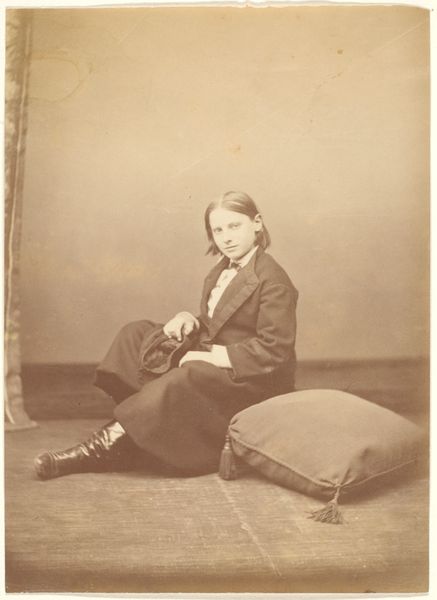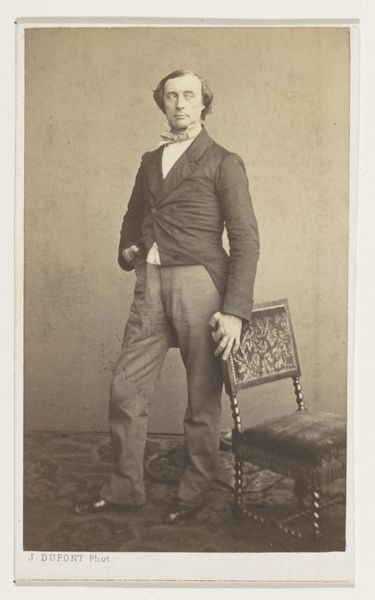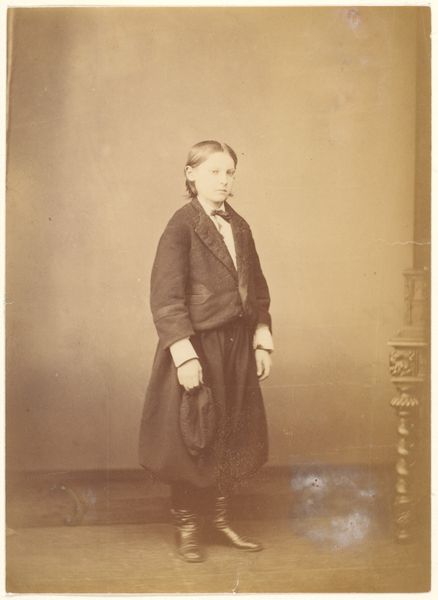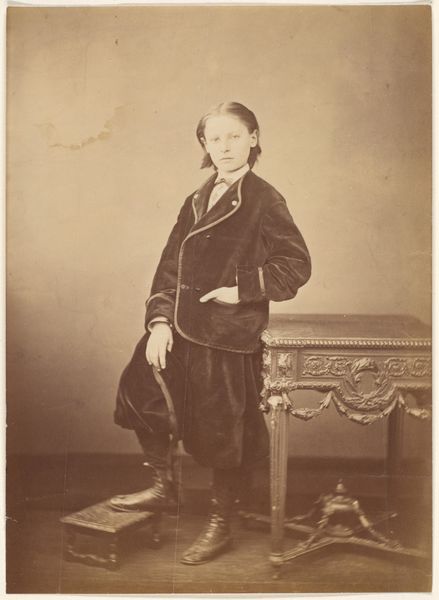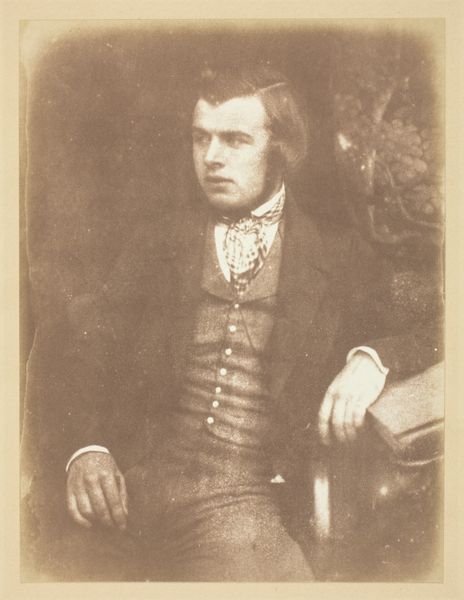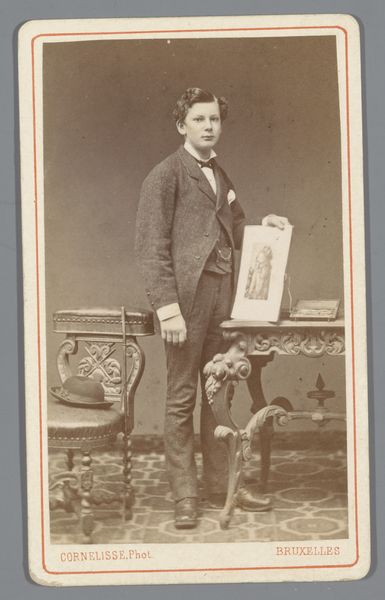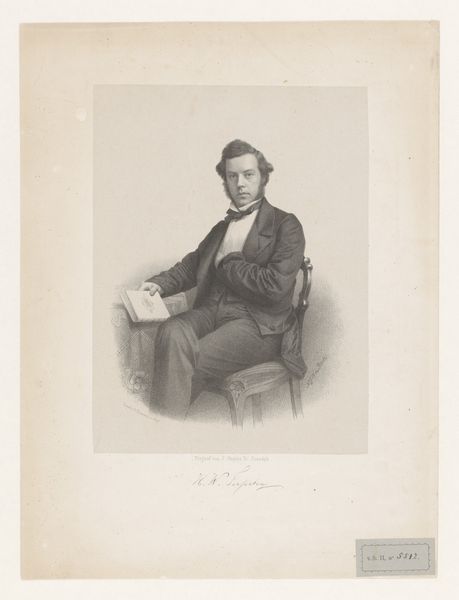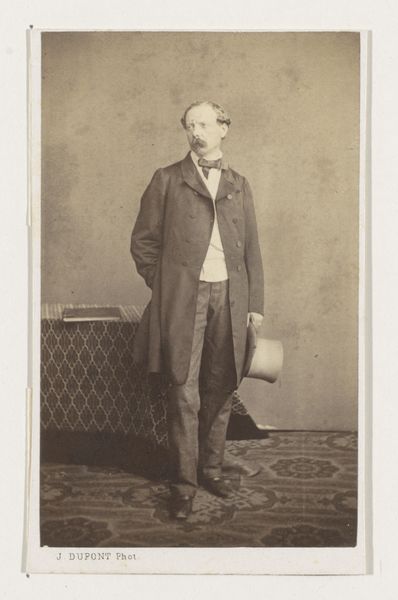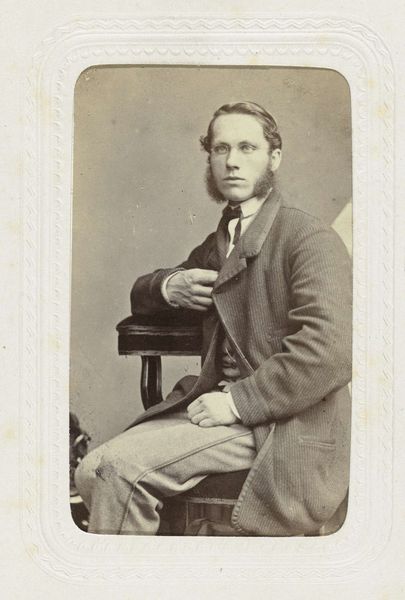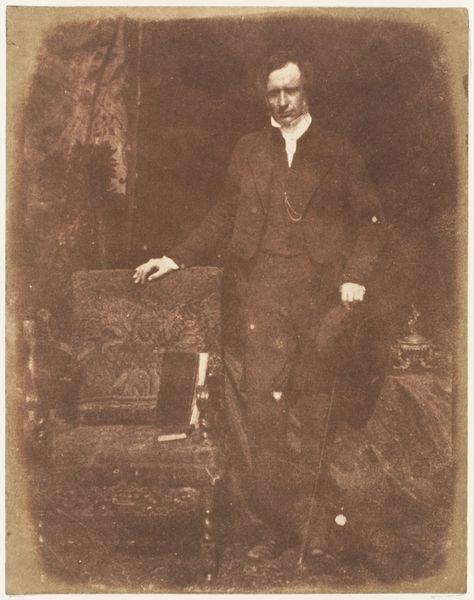![[Self-Portrait] by Roger Fenton](/_next/image?url=https%3A%2F%2Fd2w8kbdekdi1gv.cloudfront.net%2FeyJidWNrZXQiOiAiYXJ0ZXJhLWltYWdlcy1idWNrZXQiLCAia2V5IjogImFydHdvcmtzLzMyY2E5YTU5LTY5YjItNDU0Ny1iZWE2LTAzYzM5Yzg0MTJkNS8zMmNhOWE1OS02OWIyLTQ1NDctYmVhNi0wM2MzOWM4NDEyZDVfZnVsbC5qcGciLCAiZWRpdHMiOiB7InJlc2l6ZSI6IHsid2lkdGgiOiAxOTIwLCAiaGVpZ2h0IjogMTkyMCwgImZpdCI6ICJpbnNpZGUifX19&w=3840&q=75)
Dimensions: Image: 12.2 x 9 cm (4 13/16 x 3 9/16 in.)
Copyright: Public Domain
Editor: This is Roger Fenton's self-portrait, a gelatin-silver print from 1852. The subject's gaze is so direct. What do you see in this piece? Curator: It's interesting to consider the radical nature of self-representation during this period, particularly within the Victorian era’s strict social constraints. Fenton, as a privileged white man, has the undeniable agency to shape his own narrative, a power not equally distributed. Editor: How so? Curator: The control over photographic representation, the gaze itself, was inherently political. How does his confident pose and direct gaze, combined with signifiers of wealth and education such as the book and attire, contribute to constructing his identity and asserting a certain status? What narratives are privileged through his gaze? Editor: I see it now. There's a very intentional construction of self. Were self-portraits in photography used differently by women or people of color? Curator: Absolutely. For marginalized groups, self-portraiture became a tool for reclaiming agency and resisting dominant representations. Consider how someone like Sojourner Truth, used cartes de visite portraits to fund her activism, directly challenging prevalent racist caricatures. In what ways do you think Fenton’s image reinforces or departs from the established artistic traditions of portraying men in power? Editor: This really gives me a new way to contextualize even something seemingly straightforward like this portrait. I learned so much today. Curator: Indeed! By examining whose stories are told, and how, we gain deeper insights into both the artwork and the society that produced it.
Comments
No comments
Be the first to comment and join the conversation on the ultimate creative platform.
